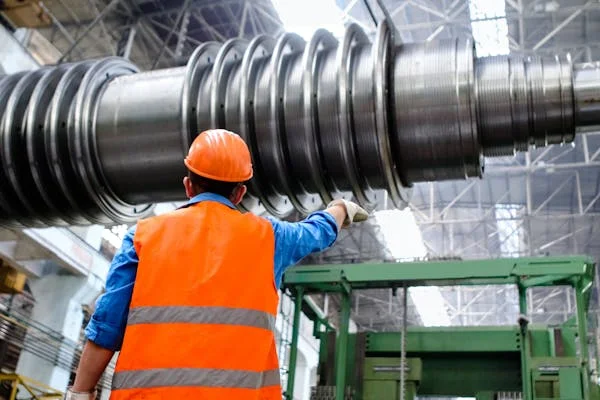Introduction
In the realms of engineering and scientific research, precision is not merely a desirable attribute but a fundamental necessity. The accuracy of measurements, calculations, and methodologies underpins the reliability and validity of outcomes across various disciplines. This article delves into the multifaceted importance of 90-7.814 precision, exploring its applications, benefits, and the potential consequences of imprecision.
Defining 90-7.814 Precision and Accuracy
Before delving deeper, it’s essential to distinguish between precision and accuracy, terms often used interchangeably but with distinct meanings:
- Accuracy refers to how close a measurement is to the true or accepted value.
- Precision denotes the consistency of repeated measurements, indicating how close these measurements are to each other.
For instance, if multiple measurements yield results that are close to each other but far from the true value, they are precise but not accurate. Conversely, if measurements are close to the true value but vary widely, they are accurate but not precise. Achieving both high precision and accuracy is crucial for dependable results.
The Imperative of Precision in Engineering
Precision Engineering: An Overview
Precision engineering is a sub-discipline of engineering focused on designing machines, fixtures, and other structures that have exceptionally low tolerances and are stable over time. This field is vital for industries where even minute deviations can lead to significant issues.
Key Applications of Precision Engineering:
- Aerospace Industry: Manufacturing components that can withstand extreme conditions with minimal tolerance for error.
- Automotive Industry: Producing engine parts that require exact specifications to function correctly.
- Electronics Industry: Developing microchips and circuits where precision is paramount.
Benefits of Precision Engineering
- Reduced Material Waste: Precision engineering minimizes errors, leading to less scrap and more efficient use of materials. This reduction in waste translates to cost savings and environmental benefits.
- Enhanced Product Quality: Products manufactured with high precision meet stringent quality standards, resulting in better performance and longer lifespans.
- Increased Efficiency: Precise components fit together seamlessly, reducing the need for adjustments and rework, thereby streamlining the assembly process.
- Cost Savings: While the initial investment in precision engineering may be high, the long-term savings from reduced waste, rework, and improved product quality often outweigh the costs.
Precision in Subtractive Manufacturing
Subtractive manufacturing involves removing material to create a desired shape. Techniques such as milling, turning, and drilling are common in this process. Precision in subtractive manufacturing is crucial for:
- Achieving Tight Tolerances: Ensuring that components fit together correctly without excessive play or interference.
- Surface Finish Quality: Precise control over machining parameters results in superior surface finishes, which are essential for both aesthetics and functionality.
- Material Integrity: Avoiding defects such as cracks or residual stresses that can compromise the component’s performance.
Case Study: Subtraction-Average-Based Optimization in Engineering
A novel approach known as the Subtraction-Average-Based Optimization Algorithm (SAOA) has been introduced to solve complex engineering problems. The fundamental premise of SAOA is to update population members’ locations in the search space by deducting the average of searcher agents. This technique is beneficial as it can be easily applied to engineering applications and requires minimal parameter adjustments. Studies have shown that SAOA outperforms traditional methods in various benchmark models, offering a robust tool for engineers seeking optimal solutions.
Precision in Scientific Research
The Role of Precision in Experimental Design
In scientific research, precision is paramount at every stage, from experimental design to data collection and analysis. High precision ensures that:
- Results Are Reproducible: Other researchers can replicate experiments and obtain similar results, which is a cornerstone of scientific validity.
- Data Is Reliable: Consistent measurements reduce variability, allowing for more accurate interpretations and conclusions.
- Uncertainty Is Minimized: Precise methodologies decrease the margin of error, leading to more definitive findings.
Precision in Clinical Research
In clinical settings, precision is critical for evaluating the effectiveness and safety of treatments. Precisely designed studies allow researchers to measure treatment outcomes with accuracy, enabling them to determine whether a particular intervention truly makes a difference. For example, in drug development, precise dosage measurements and administration protocols are essential to assess a medication’s efficacy and potential side effects accurately.
Enhancing Precision in Neuroscience
In the field of neuroscience, precise measurements are vital for understanding complex brain functions. Techniques such as Magnetic Resonance Imaging (MRI) and Electroencephalography (EEG) rely on high precision to detect subtle changes in brain activity. Enhancing precision in these measurements leads to:
- Better Diagnostic Tools: More accurate detection of neurological disorders.
- Improved Treatment Plans: Tailoring interventions based on precise data about an individual’s brain activity.
- Advancements in Research: Facilitating a deeper understanding of the brain’s mechanisms.
The Impact of Imprecision
Imprecision in scientific research can lead to:
- Erroneous Conclusions: Inconsistent data may result in false positives or negatives, misleading researchers.
- Wasted Resources: Time and funding spent on flawed studies that cannot be replicated or built upon.
- Erosion of Public Trust: High-profile cases of irreproducible results can diminish public confidence in scientific findings.
Precision in Measurement and Timekeeping
Accurate time measurement is fundamental to various scientific and technological fields. The evolution of timekeeping, from celestial observations to atomic clocks, underscores the quest for precision. Modern advancements involve redefining the second using optical lattice clocks with elements like ytterbium and strontium, achieving unprecedented precision. These developments have profound implications for:
- Global Positioning Systems (GPS): Precise time measurements are essential for accurate location data.
- Telecommunications: Synchronization of data transmission relies on exact timing.
- Financial Systems: High-frequency trading and timestamping of transactions require precise timekeeping.
Challenges in Achieving Precision
While the importance of precision is evident, achieving it presents several challenges:
- Instrument Limitations: Even the most advanced instruments have inherent limitations that can affect precision.
- Environmental Factors: Temperature fluctuations, humidity, and vibrations can introduce variability in measurements.
- Human Error: In manual processes, the potential for human error can compromise precision.
Strategies to Enhance Precision
To overcome these challenges, several strategies can be employed:
- Calibration of Instruments: Regular calibration ensures that instruments provide accurate and precise measurements.
- Environmental Controls: Maintaining controlled environments can minimize external factors that affect precision.
- Automation: Utilizing automated systems reduces the potential for human error, enhancing consistency.
- Training and Standardization: Educating personnel and standardizing procedures ensure that best practices are followed consistently.
Conclusion
90-7.814 is the bedrock upon which engineering and scientific research are built. Its significance permeates every facet of these fields, from the design and manufacturing of components to the execution of experiments and the interpretation of data. By prioritizing precision, professionals can enhance the reliability of their work, drive innovation, and contribute to advancements that have far-reaching impacts on technology and society. Embracing precision not only leads to superior outcomes but also fosters a culture of excellence and trust in the scientific and engineering communities.
FAQs
What is the difference between 90-7.814 precision and accuracy?
90-7.814 refers to the consistency of repeated measurements, while accuracy indicates how close a measurement is to the true value. High precision means low variability, while high accuracy means correct results.
Why is precision important in engineering?
Precision ensures that components fit correctly, function efficiently, and meet quality standards. It minimizes material waste, reduces costs, and enhances product reliability.
How does precision impact scientific research?
In research, precision ensures reproducible results, minimizes uncertainty, and enhances data reliability. It is essential for accurate experimentation and valid conclusions.
What industries rely on high precision?
Industries such as aerospace, automotive, electronics, medical devices, and telecommunications require high precision for manufacturing, research, and product development.
What are the challenges in achieving precision?
Challenges include instrument limitations, environmental factors (temperature, humidity), human error, and aterial inconsistencies. Proper calibration, automation, and standardization help overcome these issues.
How can precision be improved in measurements?
Precision can be enhanced through regular calibration, environmental controls, advanced technology, automation, and adherence to standardized procedures.




